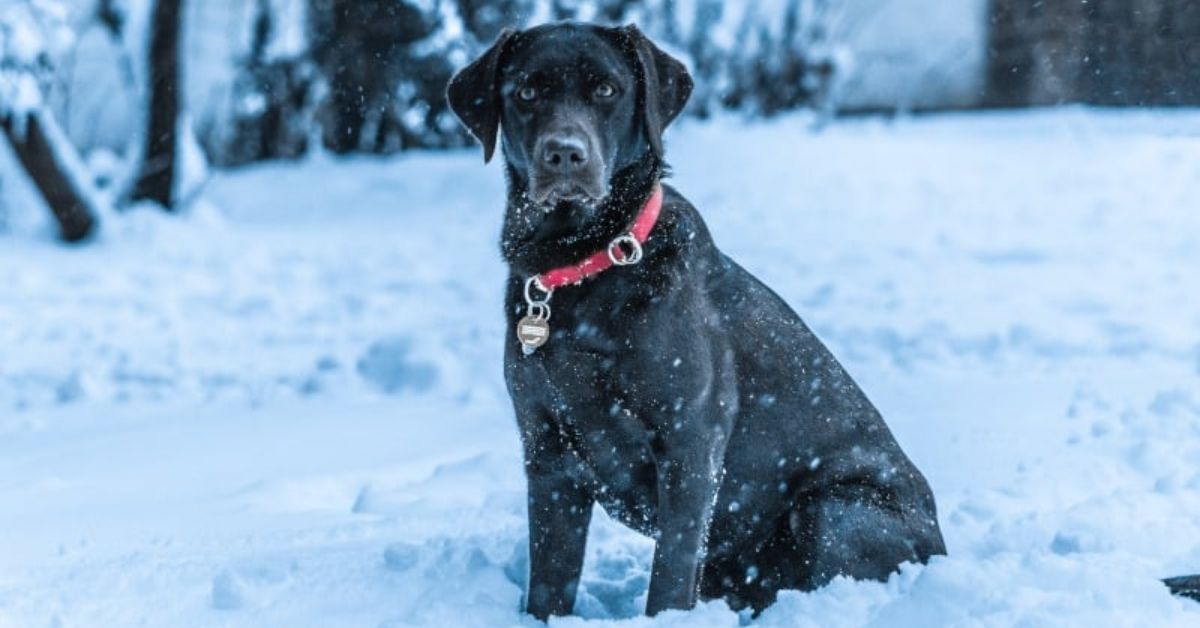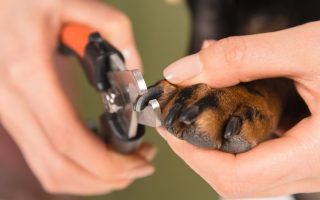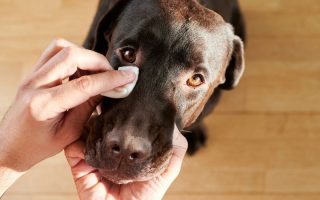When you’re buying a Lab, it’s only natural, and responsible to wonder if your pup will thrive in your climate.
If you’re like most of us, it can get cold where you live, and not all dogs do well in chilly or snowy climates.
But what about Labs?
Do Labradors Get Cold in Winter?
Yes, at low temperatures Labs can experience the effects of cold weather conditions, and face potential risks.
But Labradors are a great cold weather dog breed with a double coat that keeps them cozy in cold air and water.
If you’re looking for a breed to keep you company on winter walks, Labs are an excellent choice.
As long as you know your dog’s limits and take precautions to keep them safe if the temperatures drop too low that is.
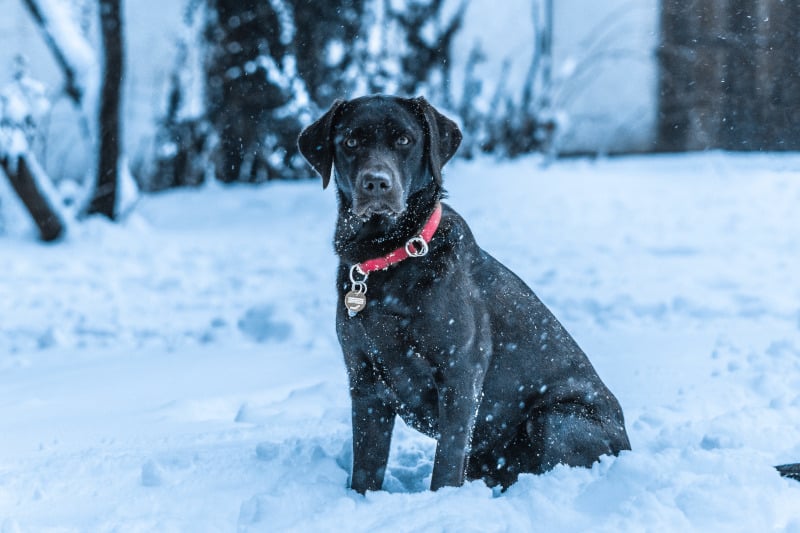
Labs & Cold: A Tale as Old as Time
Understanding why Labs can face cold conditions requires a little bit of history.
As far back as the 1500’s the breed we now recognize as the Labrador was being bred in Newfoundland as a working dog.
Newfoundland, located in Canada, is a chilly place. Winter temperatures average around 32 degrees in December and rarely rise above 61 degrees in the middle of summer.
For a dog to thrive here it needed to be tough, and settlers to the area took note.
Related: What Age Do Labradors Calm Down
As Labs evolved, there became a strong favor towards dogs displaying thicker, waterproof coats.
Dogs who had warm and water-resistant coats were beneficial since settlers of Newfoundland used Labs to help them ice-fishing.
Labradors were first in line to retrieve nets and other fishing equipment from the water.
I can only imagine the temperatures of the icy water in the North Atlantic.
Centuries of this type of breeding resulted in the version of Labs we know today.
Many of these cold-weather traits remained, along with a Labrador’s love for all things water.
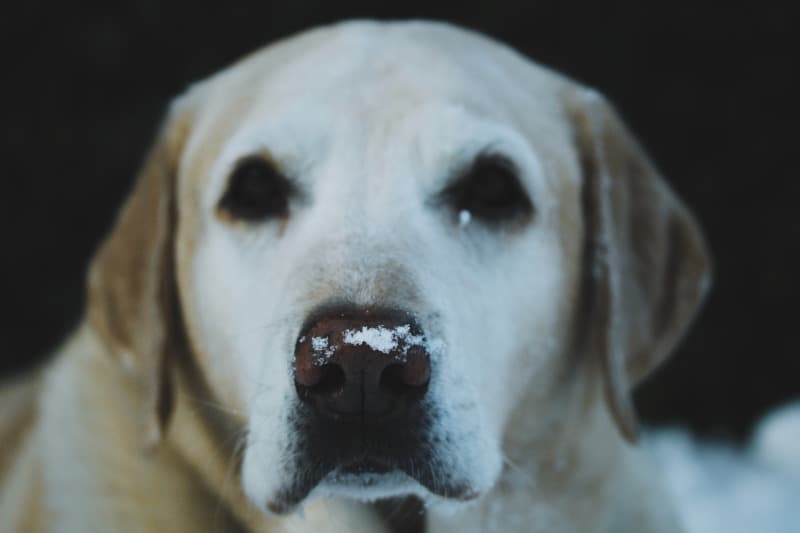
Signature Double Coat
As mentioned, Labs are known for their thick and water-resistant coats.
Most Labrador Retriever owners will notice this trait by the significant shedding their dog exhibits.
What some Lab parents may not know is that this unique feature is referred to as a “double coat”.
Labs have an outer coat, sometimes referred to as a guard coat, as well as a thick inner coat, referred to as an undercoat.
Each of these coats serves a distinct purpose.
The outer coat may be rougher to the touch and repels dirt and water as a barrier between them and the dog’s skin. Hence the name guard coat.
The undercoat is usually much softer and denser and acts as insulation to a Labrador.
It protects them against the chill of the air and ice-cold water, keeping their bodies warm even in the middle of winter.
The undercoat also keeps Labs cooler during the summer.
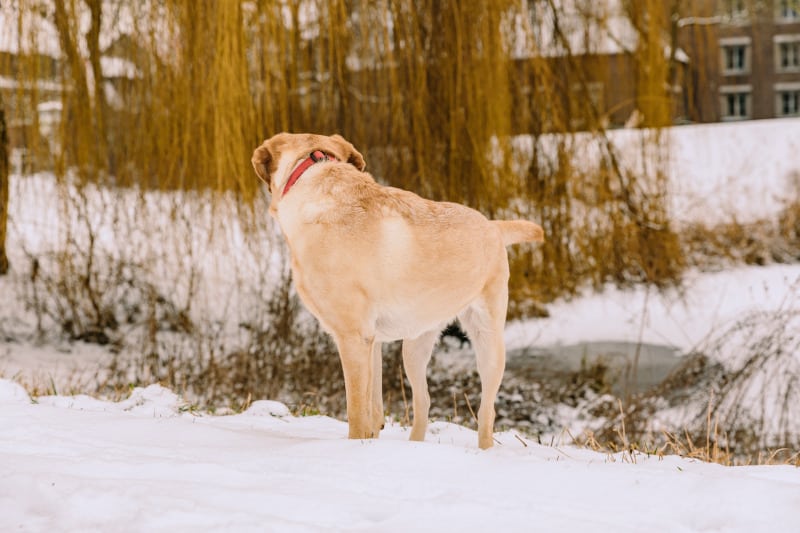
It acts as a temperature regulator, making sure your dog can be comfortable to work and play year round.
The undercoat produces an oily substance that covers the coat of the Lab, making its fur water-resistant and keeps its skin dry.
Knowing this, you may feel confident your Labrador can take on any cold temperatures your climate may throw its way. But this isn’t quite true.
Every dog has their limits, and before you take your Lab outside on a frigid day, there are a few things you should consider.
Don’t Miss: Labrador Food Guide
Windchill
Before leaving your dog in the yard, or taking them on a long walk, it’s important to consider the wind chill factor.
Temperatures that may not seem so cold at first glance will brisker depending on the wind.
Labradors that may be very comfortable with the still air temperature are not immune from cold wind. It can cut through their layers of coat, and chill noses and paws.
Age
It may be unsurprising that your Lab’s tolerance for cold weather conditions can be linked to their age.
Younger adult dogs, in general, are more resilient and adjust better to changes in climate.
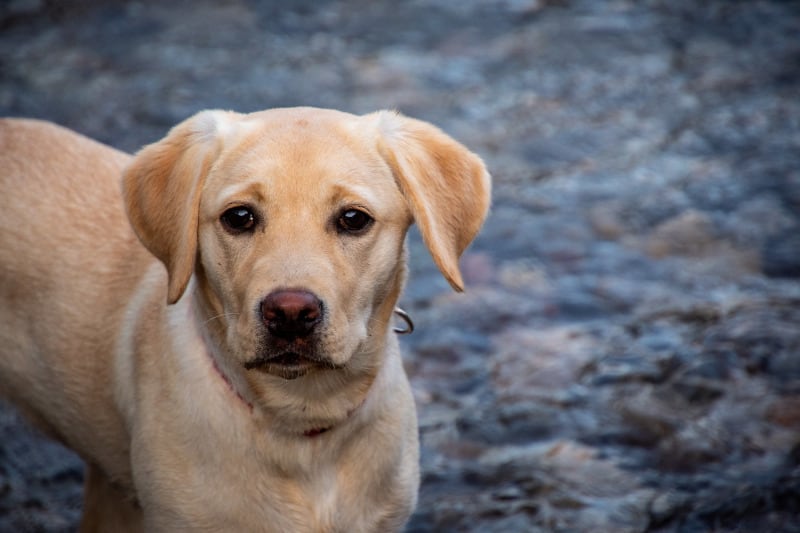
If you are the owner of a senior Lab, pay special attention to air temperatures. You should look for cues from your dog that tell you it may be too cold for them to stay outside.
It is also unwise to leave a Labrador puppy outside in the cold conditions.
Their small size and inexperience make regulating their body temperature more difficult.
This leaves them vulnerable and means that they should never be left out on cold days or nights.
See Also:
Health and Weight
Another important factor is your Lab’s general health and weight.
Healthy dogs with no pre-existing conditions are usually great at withstanding the cold and regulating their body heat.
Labrador Retrievers who have been sick or those who have preexisting health conditions like arthritis or hip dysplasia should never be left outside in cold weather.
Not only is it unsafe, but it can worsen chronic conditions and make your dog uncomfortable or even ill.
Also, Labs with higher body fat percentages are better suited to withstand cold temps. This is because fat is an incredible insulator.
Between a thick layer of body fat and their double coat, heavier dogs are far less likely to feel the cold.
If your Labrador is on the leaner side you should be more careful though.
Time of Day
The time and conditions of the day will have an impact on your Lab’s ability to stay outside in chilly weather.
Sunny skies make cold temperatures feel warmer, and your Lab will be able to absorb heat easier.
Days with a lot of cloud cover are harder to bear. Plus at night, temperatures may drop a lot.
It is important to watch the forecast so you do not leave your dog outside on cold nights in weather that may be dangerous.
Don’t Miss:
Levels of Moisture
Generally, dry dogs can stay warm easier than wet dogs.
It is important to dry your Lab off after a cold water swim. Try to provide a warm area for them to heat back up after a chilly dip in the lake or river.
If it has been snowing out make sure to dry off any melting snow too.
You will not only make sure your Lab pup is comfortable, but it will also be easier for them to regulate their body temperature.
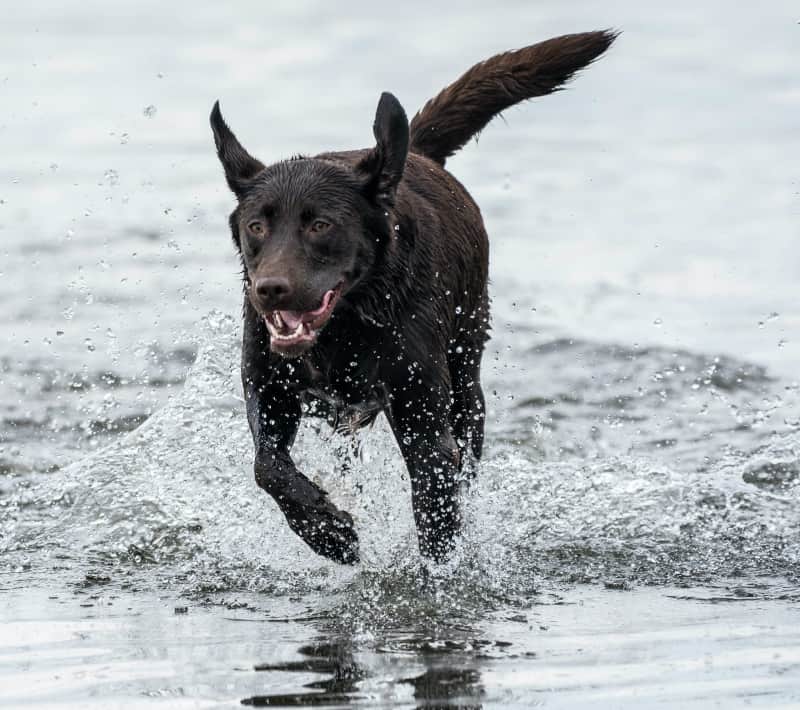
How Cold is Too Cold?
Even great cold weather dogs like Labradors have their limits.
Before taking your dog out for a long walk, or just leaving them out in the yard, make sure to consider a few things.
Most vets agree that dogs should not be left out in temperatures below 20 degrees Fahrenheit.
Instead of using 20 degrees as a rule of thumb, consider taking more vulnerable Labs inside at 25 or 30 degrees.
Also, like us, Labradors are susceptible to hypothermia and frostbite.
Pale skin, shivering, skin that is grey or cold to the touch and fatigue are signs your dog’s temperature has dropped too low and you should seek medical attention.
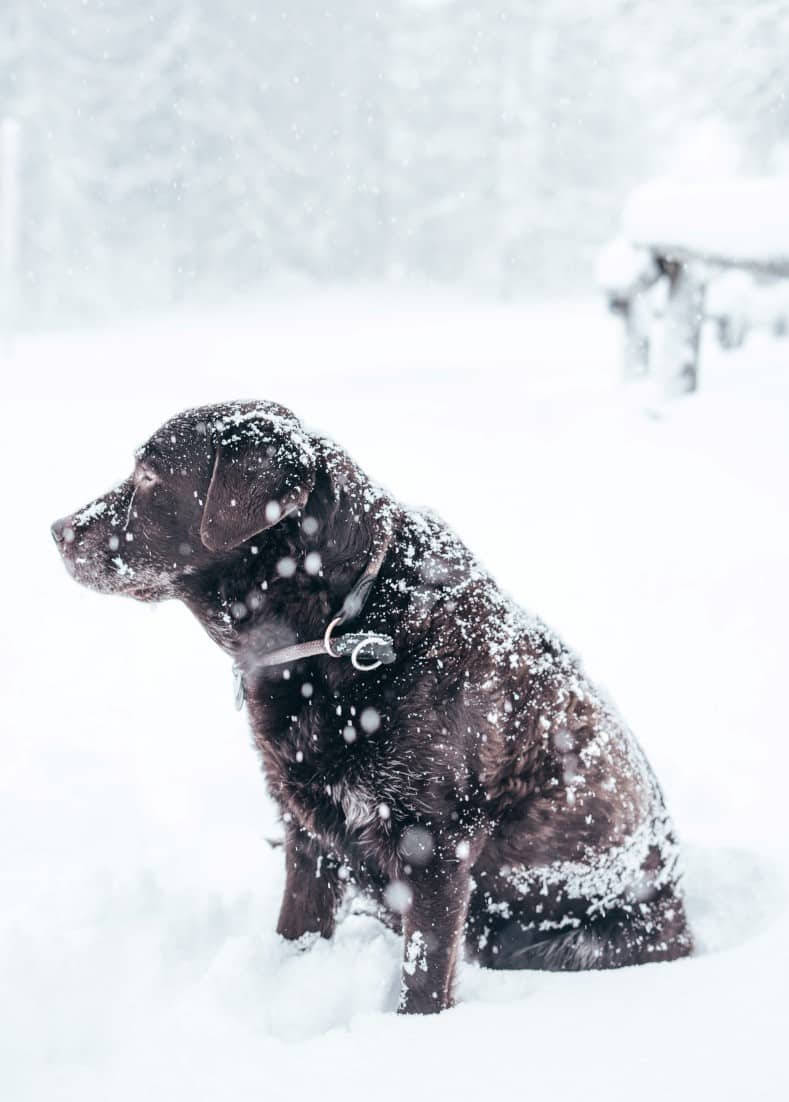
Staying Warm in Winter
If temperatures do drop below 20 degrees, and you still need to take your Lab outside, don’t worry.
There are things you can do as an owner to help your Lab stay warm and cozy no matter the weather.
Extra Food and Plenty of Water
A dog’s body burns more calories in the winter while it regulates its temperature.
Because of this, you may need to increase the amount of food and water you are giving to your Lab.
This shouldn’t be a drastic change in quantity. Instead, use a small extra amount to account for the calories your dog may be losing to the cold conditions.
The more running around your Labrador is doing in the snow, the more food they may need to stay satisfied.
Insulated Bedding and Kennel
A warm place to sleep at night is always important for indoor dogs. If your Lab stays outside then a shelter is an absolute must.
Give your Lab an insulated kennel that is windproof and has proper bedding to protect them from the elements.
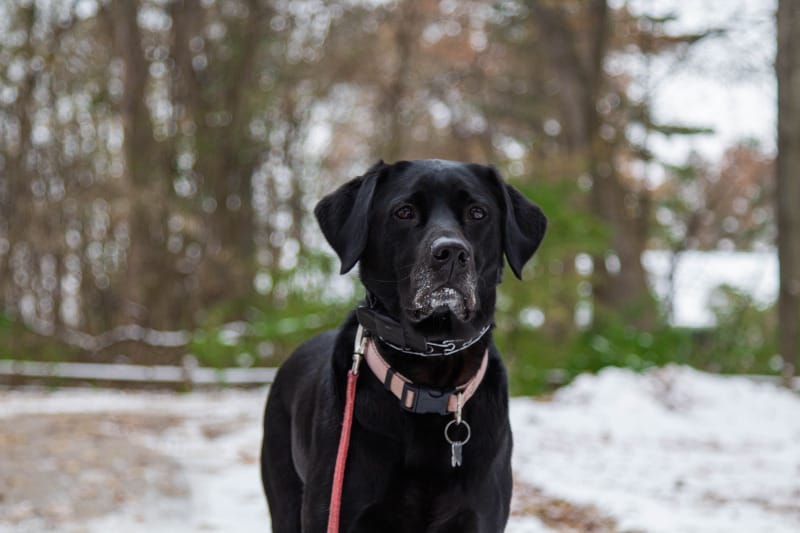
Bring a Coat
If your Lab loves a good winter walk, and the elements don’t want to cooperate, it may be smart to invest in a warm coat for your dog.
You can find sweaters and vests at most major pet retailers. This will help keep your Lab’s core warm and provide extra insulation in very cold temperatures.
Plus they can be stylish if you want to show off your Labrador’s personality.
Wrapping it pUp
Use your best judgment and watch for signs your Lab is giving you. We all want our furry friends to be comfortable no matter the time of year.
Sometimes it’s too cold to be outside even if you have a double coat of fur like our favorite Labs.

